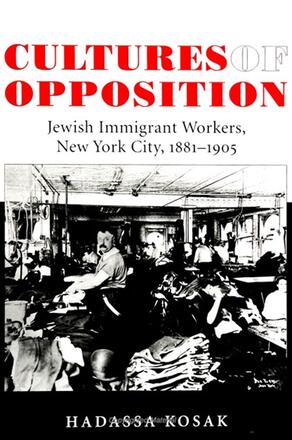
Cultures of Opposition
Jewish Immigrant Workers, New York City, 1881-1905
Alternative formats available from:
Looks at the forging of a new Jewish political culture at the turn of the century.
Description
2001 CHOICE Outstanding Academic Title
This work provides a reinterpretation of the origins of Jewish working-class oppositional culture in the United States. It tells how this culture was characterized by public practices such as strikes, attacks on scabs and police, rent strikes, consumer boycotts, and street parades. The participants in this social unrest ultimately forged an unmistakably new Jewish political culture informed by concepts of social justice, community solidarity and effective community-wide political participation. Enhancing Kosak's fascinating narrative are eleven period photographs.
Hadassa Kosak is Assistant Professor of History at Yeshiva University.
Reviews
"…an impressively researched and thoughtful book … Kosak is able to bring to the forefront the larger context in which Jewish immigrants made a place for themselves in New York City. " — Journal of American Ethnic History
"Hadassa Kosak's theoretically sophisticated study of the political culture of early East European Jewish immigrants to New York is both interesting and valuable … Kosak makes particularly good use of newspapers published during the period with which she is concerned, and of unpublished, underutilized, autobiographies and interviews … her work deserves to be read and applauded. " — Jewish Culture and History
"A fascinating story of artisanal Jewish people as they make the journey from the Pale of Settlement to New York's Lower East Side at the end of the nineteenth century. The source material is vibrant and alive with meaning. The analysis of the relations between artisans and the official keepers of the Jewish tradition is thoughtful and clear. The voices and the events she chronicles make this history real and readable. " — Elizabeth Ewen, author of Immigrant Women in the Land of Dollars: Life and Culture on the Lower East Side, 1890–1925